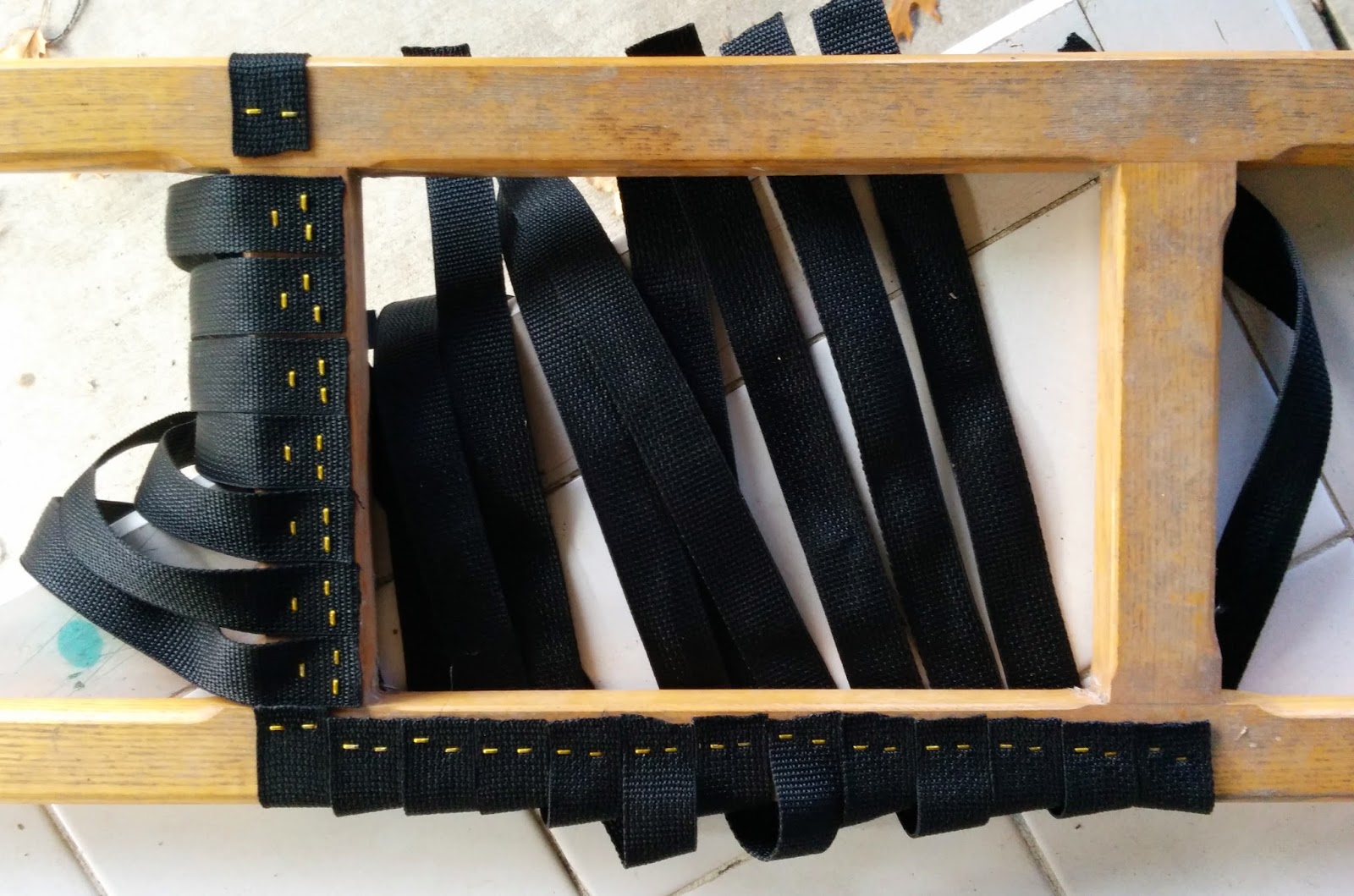Our old wicker canoe seats were in terrible shape by the end of this summer. I was inspired by some nice woven seats I saw at the Minnesota State Fair, I decided to try replacing the original wicker / cane seats with something similar using a synthetic webbing.
 |
| reference canoe seat at the Fair |
 |
| bottom of the reference canoe seat at the Fair |
A quick search on Amazon.com brought up a bunch of choices for webbing- different materials, colors, and sizes. I did some research online, and it seemed as though Polypropylene webbing is a better choice than nylon webbing. The polypro webbing is supposed to be more weather / UV resistant, as well as less stretching when they get wet. I decided to go with 1" wide webbing since it would also be useful for belts, backpack straps, etc.
I purchased a roll of the Country Brook Design 1" polypro black webbing via Amazon.com.
To fasten the webbing to the seat frame, I chose to use a staple gun and 1/2" x 1/4" crown 18 ga staples. These were the shortest staples I could find that would fit my Porter Cable pneumatic staple gun. Lowe's and Home Depot didn't have small boxes of this size staple- they only carried 3000+ staple cases. Menards turned out to carry a reasonable size box of staples.
After stripping the old woven cane seat off the canoe seat frames, I started cutting the webbing to length. I wanted a tight weave, so I laid out the webbing on the seat frame with no gaps between pieces. I cut the webbing with a heavy duty kitchen scissors and sealed the cut ends with a lighter to prevent fraying.
 |
| Starting webbing layout |
I started attaching the webbing by stapling the end strand to the frame.
 |
| End webbing attached |
Next, I lined up and stapled the webbing to the "side" and "bottom" of the frame.
After one end of each of the webbing segments was attached, I flipped the seat over and started weaving the strands, working my way out from the corner where the segments were attached.
 |
| Starting to weave the strands |
During the weaving process, I'd stop occasionally and pull everything tight.
 |
| Nearly complete |
After all segments were woven, and after I pulled out as much slack as possible, I started to staple down the loose ends. Before stapling each segment I'd grab the segment and pull it as tight as I could, and I also would slide it over to get it as close as possible to the adjacent segment.
 |
| Bottom stapled |
 |
| Everything stapled! |
 |
| Bottom of seat after stapling |
 |
| Both seats, ready to go |
 |
| Installed- ready for paddling! |
This project was a lot easier and faster than I thought- and made the canoe seats much more comfortable.














